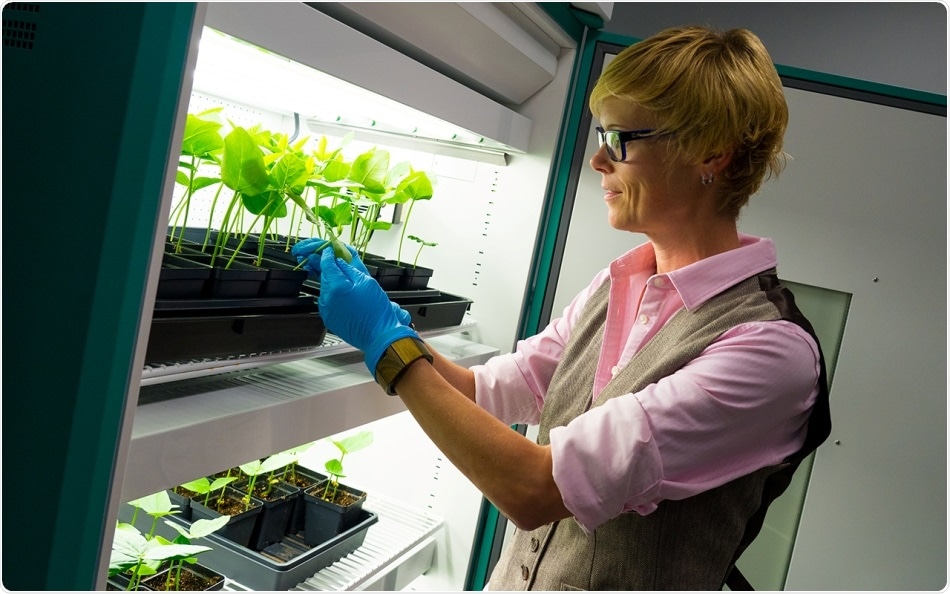At the University of California San Diego, nanoengineers are making efforts to develop a vaccine for COVID-19 using a plant virus—an unconventional candidate.
The aim is to develop a stable and easy-to-produce vaccine using plants that can be shipped worldwide.

Nicole Steinmetz. Image Credit: University of California San Diego.
It will be packed into slow-release microneedle patches that can be worn by patients on their arm for painless self-administration of the vaccine in a single dose.
Nanoengineering professors Nicole Steinmetz and Jon Pokorski from UC San Diego received a Rapid Response Research (RAPID) grant from the National Science Foundation for this project.
The grant supports research proposals that can immediately deal with the critical challenges, like the novel coronavirus pandemic.
To really make an impact, we are making a vaccine that’s stable at room temperature and above so it can be shipped—without refrigeration—throughout the world and be distributed to resource-poor areas.”
Nicole Steinmetz, Director, Center for Nano Immuno-Engineering, University of California San Diego
The Steinmetz laboratory will work toward the development of the vaccine, and the Pokorski laboratory will develop vaccine delivery devices as low-cost, slow-release microneedle patches that can be easily manufactured and shipped across the globe.
People can just self-apply these patches, so no need for doctor’s visits. Our goal is to reduce the barriers to vaccination around the world.”
Jon Pokorski, Faculty Member, Center for Nano Immuno-Engineering, University of California San Diego
The researchers used a plant virus that infects legumes to develop the vaccine and designed it to be similar to the novel Coronavirus (SARS-CoV-2). Molecular signatures, known as peptides, specific to SARS-CoV-2 will be interwoven onto the plant virus surface so that it can mimic an immune response.
According to Steinmetz, the highlight of this approach is that the plant virus does not infect humans. His lab specializes in designing those plant viruses for the treatment of plant and human health. Plant viruses are also easy to synthesize in larger scales since they can be developed on plants by a process called molecular farming.
The teams’ vaccine is compatible with the techniques used to create the microneedle patches because the plant viruses are highly stable even at elevated temperatures.
The approaches, known as injection molding and melt extrusion, are polymer processing methods that can be used for the mass production of plastic products such as disposable cutlery and Legos. In these methods, polymer materials are melted at 100 °C.
This temperature is considered very high for most of the biological materials, but not for the plant virus-based vaccine. Thus, it can be easily incorporated into vaccine patches.
Pokorski’s lab tailored the techniques to enable scaling them down to perform quick, low-cost pilot studies on the vaccine patches.
These methods are usually performed at kilogram scales, and trying to make that much vaccine to do a pilot study would be incredibly expensive. “Once we find something that works, we could easily scale it up because these methods are widely used in manufacturing.”
Jon Pokorski, Faculty Member, Center for Nano Immuno-Engineering, University of California San Diego
Steinmetz stated, “By synergistically combining our labs’ areas of expertise in plant virus-based vaccine design and biomedical device manufacturing, we hope to really move this research forward to rapidly generate a scalable solution for the current pandemic.”